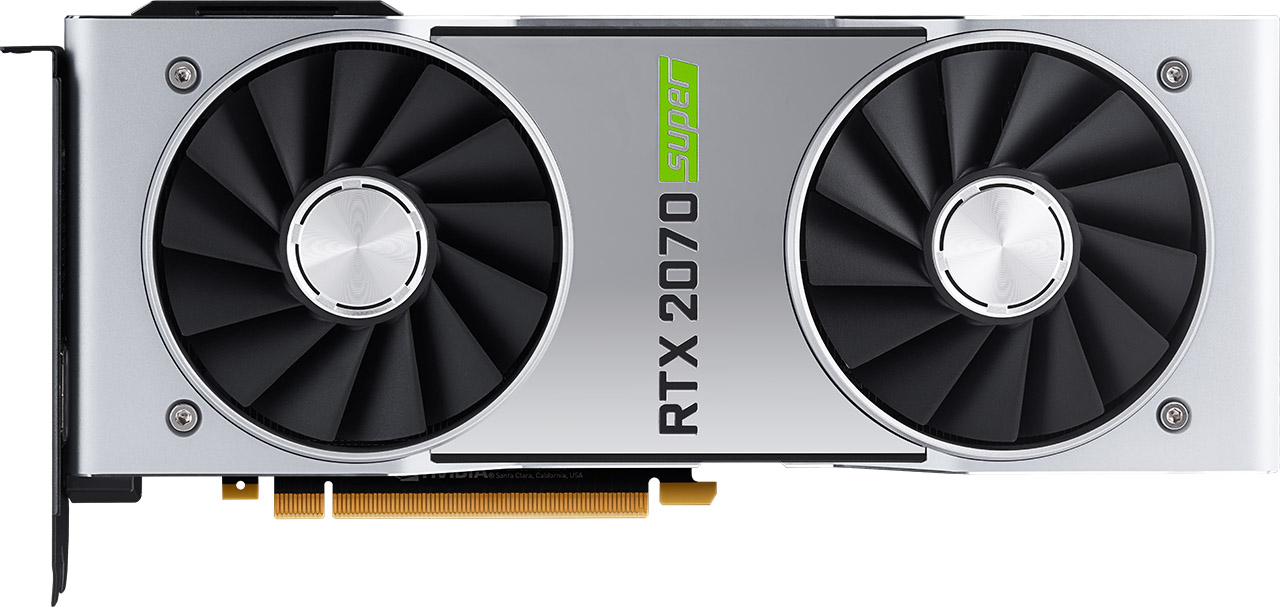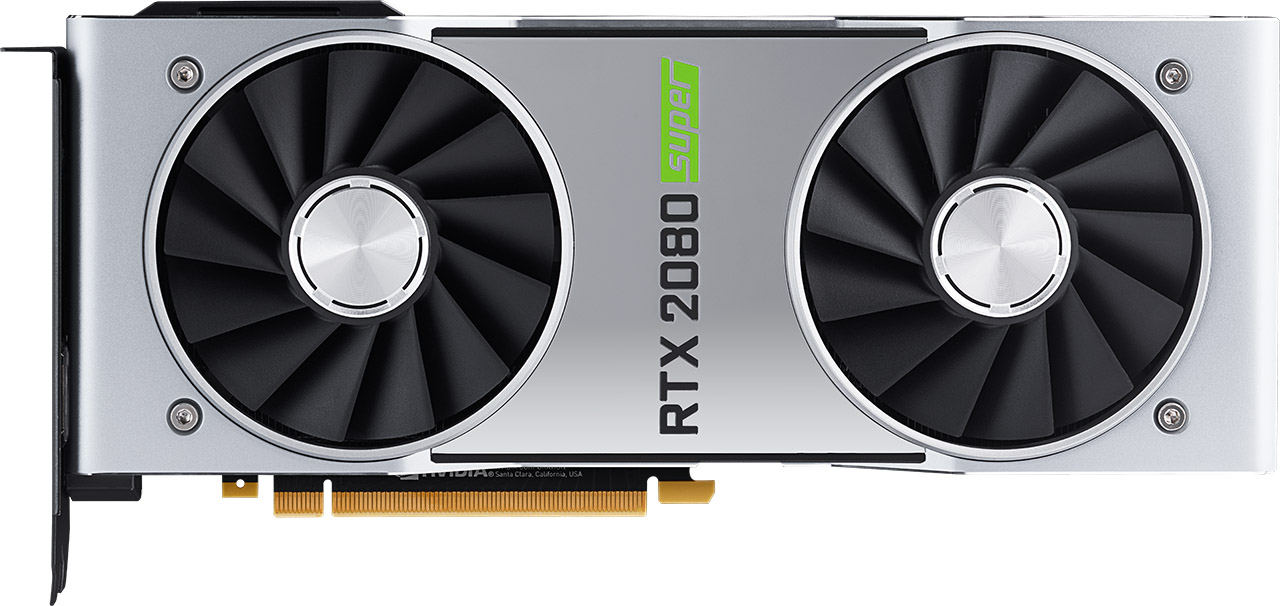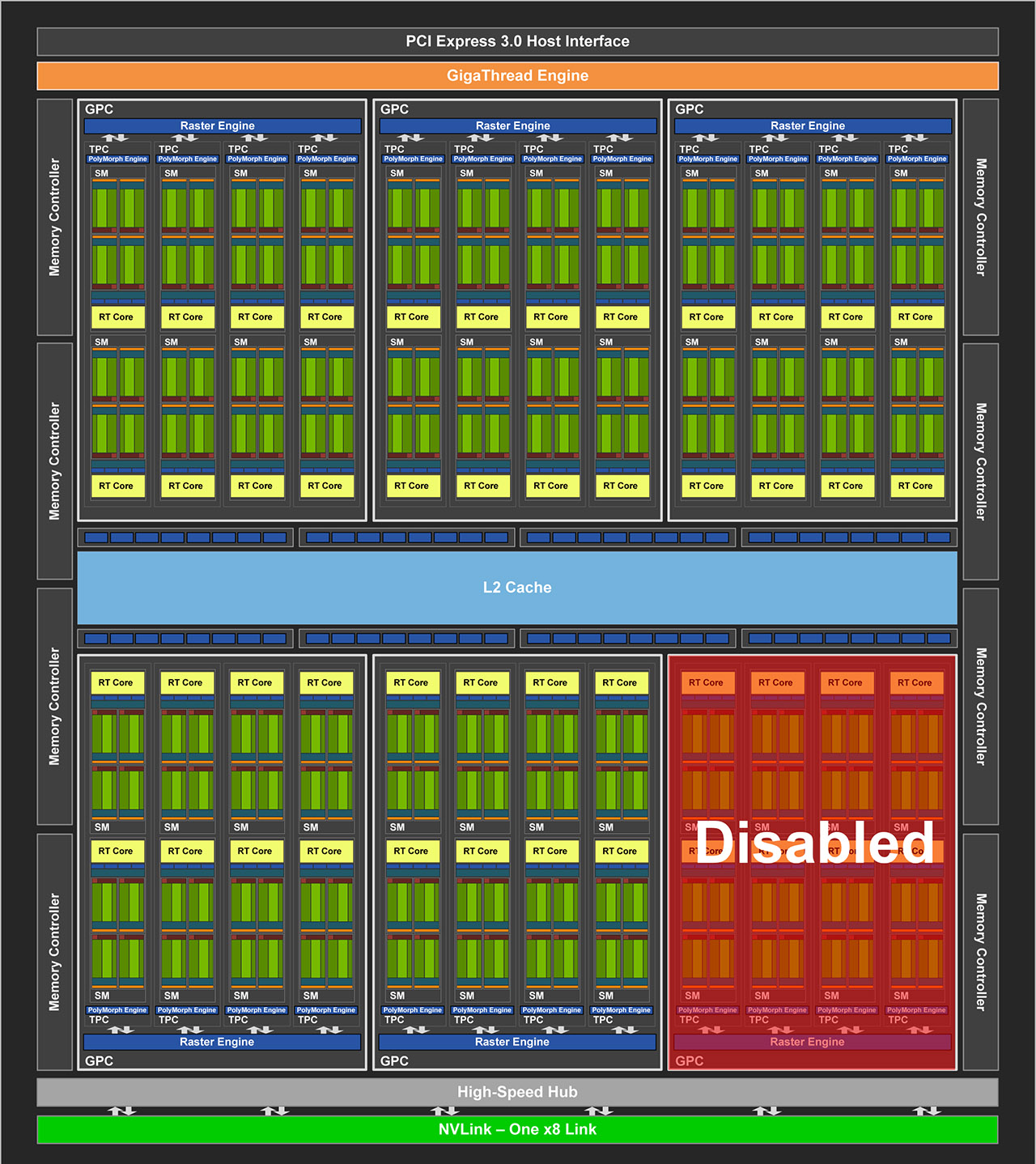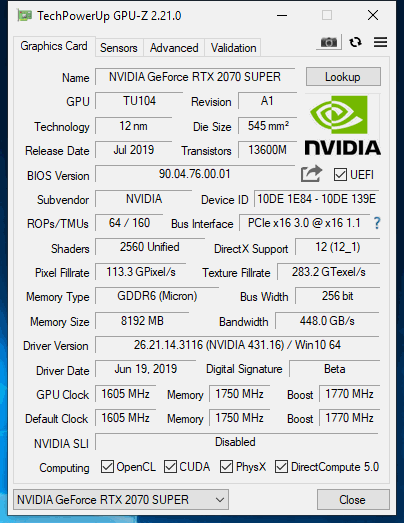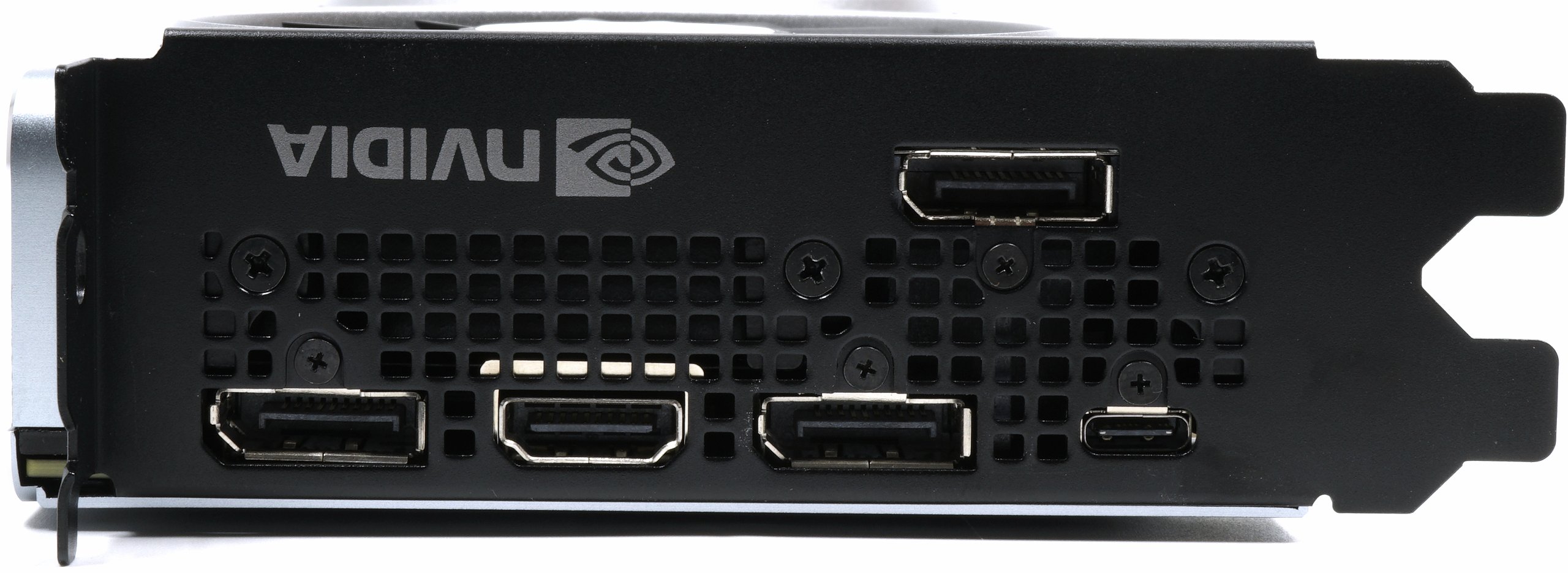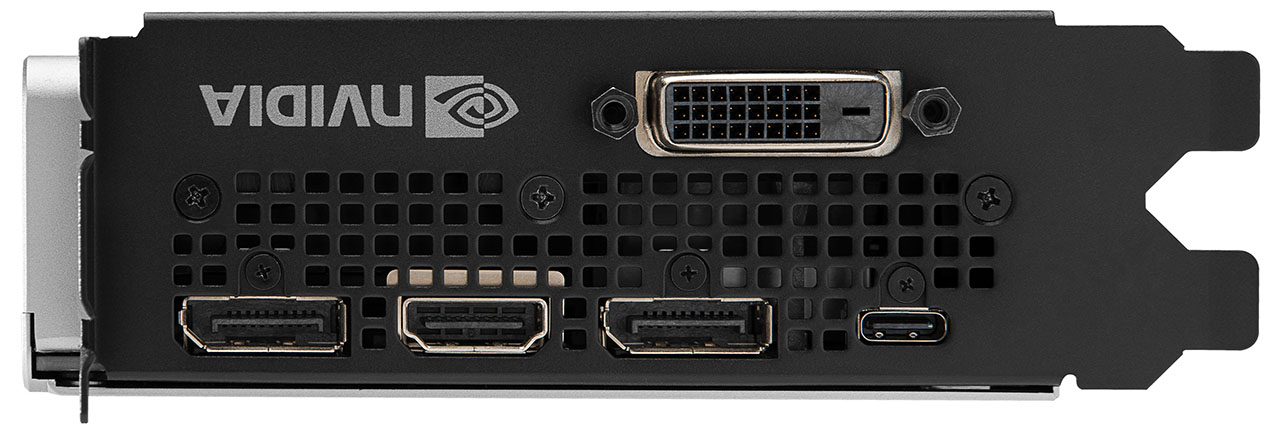Tom's Hardware Verdict
Although we aren’t sure who asked for something in between the GeForce RTX 2060 and GeForce RTX 2070 Super, Nvidia’s GeForce RTX 2060 Super does deliver smooth frame rates across our benchmark suite at 2560 x 1440 at maxed-out detail settings. Support for real-time ray hybrid ray tracing technologies should become even more of a differentiator as time passes.
Pros
- +
Strong performance at 2560 x 1440 for less money than the GeForce RTX 2070
- +
Single eight-pin power connector is good for enthusiasts with mainstream PSUs
- +
High-quality Founders Edition design without the Founders Edition tax
- +
Quiet
- +
8GB GDDR6
Cons
- -
Faster GPU than GeForce RTX 2060 and same-sized cooler lead to hotter operating temps
- -
Thermal solution blows waste heat back into your case
- -
The need for a card slightly faster/more expensive than GeForce RTX 2060 is questionable
Why you can trust Tom's Hardware
Nvidia bet big on real-time ray tracing with the Turing graphics architecture. And back in 2018, the company’s skeptics wondered if that gamble was a smart one. Today, after significant performance optimizations across the first batch of ray-traced games, along with a growing list of upcoming triple-A franchises pledging to add the technology, it seems pretty clear that a lot of respected developers really want ray tracing in their projects.
Now it’s just a matter of making fast-enough hardware accessible to a broader audience. The lowest-end Turing-based board with ray tracing acceleration is GeForce RTX 2060, and it starts at an eyebrow-raising $350/£330. GeForce RTX 2070 sells for as little as $500, while the 2080 can be found for $700. Nvidia’s own overclocked Founders Edition models commanded $100 premiums above and beyond the cheapest partner cards, but those are out of stock and unlikely to return.
Today’s launch of GeForce RTX 2060 Super, GeForce RTX 2070 Super, and GeForce RTX 2080 Super sees Nvidia making RTX cards available at more diverse price points, bumping performance across the board, and doing away with the Founders Edition tax. All of these cards offer performance that's superior to that of their predecessors, but at publication time, the RTX 2070 Super in particular took a place on our list of best graphics cards.
Still The Same Old Turing
Although we’re discussing a trio of new products, the GPUs they center on and their underlying architectures remain unchanged from what we introduced in Nvidia’s Turing Architecture Explored. We all know the impetus for these Super cards is renewed competition from AMD’s upcoming Radeon RX 5700 and 5700 XT. However, Nvidia says it’s simply taking advantage of improved yields and process tweaks to juggle on-die resources and clock rates.
| Old GeForce RTX Line-Up | Availability | New GeForce RTX Line-Up | Availability |
| GeForce RTX 2080 Ti FE - $1200GeForce RTX 2080 Ti Partners - $1000 | Now | GeForce RTX 2080 Ti FE - $1200GeForce RTX 2080 Ti Partners - $1000 | Now |
| GeForce RTX 2080 FE - $800GeForce RTX 2080 Partners - $700 | Out of Production | GeForce RTX 2080 Super - $700 | 7/23 |
| GeForce RTX 2070 FE - $600GeForce RTX 2070 Partners - $500 | Out of Production | GeForce RTX 2070 Super - $500 | 7/9 |
| Row 4 - Cell 0 | Row 4 - Cell 1 | GeForce RTX 2060 Super - $400 | 7/9 |
| GeForce RTX 2060 FE - $350GeForce RTX 2060 Partners - $350 | Now | GeForce RTX 2060 - $350 | Now |
The result is a slightly larger stack that sees GeForce RTX 2070 and GeForce RTX 2080 replaced completely by their Super successors. GeForce RTX 2060 lives on at its previous price point, while GeForce RTX 2060 Super slots in just above it for anyone willing to pay an extra $50. GeForce RTX 2080 Ti similarly maintains its position at the top of Nvidia’s GeForce RTX portfolio.
How do these cards compare to AMD’s upcoming Navi-based boards? Radeon RX 5700 XT, which we expect to slightly beat or tie the original GeForce RTX 2070, is priced at $450. That’s right in between GeForce RTX 2070 Super and GeForce RTX 2060 Super. In a world without the Supers, AMD’s card would have been faster and less expensive right out of the gate. But if Nvidia’s claim that GeForce RTX 2070 Super is 16% faster than a vanilla 2070 turns out to be true, the Radeon loses its advantage and must do battle without ray tracing support.
| Header Cell - Column 0 | GeForce RTX 2060 Super | GeForce RTX 2070 Super | GeForce RTX 2080 Super |
|---|---|---|---|
| Architecture (GPU) | Turing (TU106) | Turing (TU104) | Turing (TU104) |
| CUDA Cores | 2176 | 2560 | 3072 |
| Peak FP32 Compute | 7.2 TLFOPS | 9.1 TFLOPS | 11.2 TFLOPS |
| Tensor Cores | 272 | 320 | 384 |
| RT Cores | 34 | 40 | 48 |
| Texture Units | 136 | 160 | 192 |
| Base Clock Rate | 1470 MHz | 1605 MHz | 1650 MHz |
| GPU Boost Rate | 1650 MHz | 1770 MHz | 1815 MHz |
| Memory Capacity | 8GB GDDR6 | 8GB GDDR6 | 8GB GDDR6 |
| Memory Bus | 256-bit | 256-bit | 256-bit |
| Memory Bandwidth | 448 GB/s | 448 GB/s | 496 GB/s |
| ROPs | 64 | 64 | 64 |
| L2 Cache | 4MB | 4MB | 4MB |
| TDP | 175W | 215W | 250W |
| Transistor Count | 10.8 billion | 13.6 billion | 13.6 billion |
| Die Size | 445 mm² | 545 mm² | 545 mm² |
| SLI Support | No | Yes | Yes |
A $380 Radeon RX 5700 similarly splits the GeForce RTX 2060 Super and GeForce RTX 2060. Nvidia says its 2060 Super averages 15% better performance than the standard 2060, which could make it slightly faster than Radeon RX 5700 with the added benefit of those fixed-function RT cores. Of course, a $20-higher price tag will give gamers something to think about if both cards trade blows.
Get Tom's Hardware's best news and in-depth reviews, straight to your inbox.
Nvidia isn’t trying to woo enthusiasts with bargain pricing here. It’s charging as much as possible at each performance point, while addressing the competition in today’s top titles. The addition of real-time ray tracing support is where the company hopes to push future-minded gamers over the edge. And with a list of ray-traced games that keeps on growing, it’s getting harder and harder for skeptics to call the technology a gimmick.
Meet GeForce RTX 2070 Super
Nvidia presents GeForce RTX 2070 Super as a faster version of the vanilla 2070, which just so happens to outperform the GeForce GTX 1080 Ti. Drilling down, though, the 2070 Super is built on an entirely different GPU than its predecessor.
The card we introduced in Nvidia GeForce RTX 2070 Founders Edition Review: Replacing GeForce GTX 1080 utilized a complete TU106 processor. It had nowhere left to grow. Nvidia probably could have bumped its 1,710 MHz GPU Boost rating up a bit. But if the company wanted to beat AMD’s reported Radeon RX 5700 XT performance claims, it’d need something faster.
So instead of working up from an already-maxed-out TU106, Nvidia started with the same TU104 chip found in GeForce RTX 2080/2080 Super. To recap, a complete TU104 comprises six Graphics Processing Cluster building blocks, each with four Texture Processing Clusters. The TPC is further divided down into two Streaming Multiprocessors (SMs). Every SM hosts 64 CUDA cores, eight Tensor cores, one RT core for accelerating ray tracing, four texture units, 256KB of register space, and 96KB of L1 cache/shared memory. TSMC manufactures the second-largest Turing GPU on its 12nm FinFET node, packing 13.6 billion transistors onto a 545 mm² die.
Carving out eight of the chip’s Streaming Multiprocessors leaves a GPU with 40 active SMs spread across five or six Graphics Processing Cluster (GPC) building blocks—this number varies depending on where the SMs are excised. Multiply out the contents of each SM by 40 and you get a front-end with 2,560 CUDA cores, 320 Tensor cores, 40 RT cores, and 160 texture units.
That 11 percent infusion of resources is then amplified by higher clock rates. Whereas GeForce RTX 2070 launched with a 1,410 MHz base frequency and 1,710 MHz GPU Boost rating, the 2070 Super starts at 1,605 MHz, yet typically operates at 1,770 MHz according to Nvidia. In our testing, GeForce RTX 2070 Super averaged 1,870 MHz to the vanilla 2070’s 1,806 MHz.
TU104 and TU106 both boast 256-bit aggregate memory buses populated by 8GB of GDDR6 moving data at up to 448 GBps. Each of their 32-bit memory controllers is associated with 512KB of L2 cache and eight ROPs, so the two GPUs similarly feature 4MB of L2 and 64 ROPs.
The effect of adopting a larger, more sophisticated graphics processor and then goosing its clock rate does incur a substantial power penalty compared to the original GeForce RTX 2070. A 215W rating is 23 percent higher than the older card’s 175W specification, pushing power consumption higher than the 2070 Super’s average performance increase. Efficiency would appear to take a hit, then, in the interest of absolute frame rates. Incidentally, the 2070 Super does duck in under GeForce RTX 2080 Founders Edition and its 225W spec.
On the bright side, adopting TU104 means that GeForce RTX 2070 Super theoretically supports a single x8 NVLink connection capable of 50 GB/s bidirectionally. And sure enough, the Founders Edition card Nvidia sent us to test does have the physical interface exposed.
In fact, the 2070 Super looks exactly like Nvidia’s GeForce RTX 2080 Founders Edition except for a different model designator between its fans and on the backplate. That means you now need to attach one six- and one eight-pin auxiliary connector up top, rather than the single eight-pin connector on the back of GeForce GTX 2070 Founders Edition. Also, whereas Nvidia’s own 2070 exposes two DisplayPort 1.4 interfaces, HDMI 2.0b, a rare DVI-DL output, and VirtualLink support over USB Type-C, the new 2070 Super trades DVI for a third DP connector, just like GeForce RTX 2080 Founders Edition.
Meet GeForce RTX 2060 Super
Nvidia had more flexibility with GeForce RTX 2060 Super. As it stood, the original 2060 already utilized a cut-down version of TU106, salvaged from imperfect processors that couldn’t be used for GeForce RTX 2070. A complete TU106 is composed of three GPCs, each with six Texture Processing Clusters. The TPCs include two SMs each, adding up to 36 SMs across the processor. By trimming off six SMs for GeForce RTX 2060, Nvidia ended up with 1,920 CUDA cores, 240 Tensor cores, 30 RT cores, and 120 texture units. The 2060 also lost two of TU106’s available memory controllers, 1MB of its cache, and 16 ROPs.
With GeForce RTX 2060 Super, Nvidia turns most of the missing resources back on. Now, only two SMs remain inactive. The resulting configuration includes 34 SMs comprising 2,176 CUDA cores, 272 Tensor cores, 34 RT cores, and 136 texture units. The 2060’s 1,365 MHz base clock increases to 1,470 MHz, while the original card’s 1,680 MHz GPU Boost rating rolls back a bit to 1,650 MHz.
The 2060 Super benefits from a wider 256-bit memory bus, too. A complete TU106 GPU boasts eight 32-bit controllers, two of which are disabled on GeForce RTX 2060 to create an aggregate 192-bit path. Enabling them on GeForce RTX 2060 Super confers a substantial bandwidth boost, from 336 GBps to 448 GBps using the same 14 Gbps GDDR6 modules. Infusing the design with 33% more throughput has other pleasant side effects, like increasing memory capacity to 8GB, adding an extra megabyte of shared L2 cache, and exposing two more ROP partitions for a total of 64 ROP units.
Nvidia is shooting for a very specific performance profile here. Since it plans to continue selling GeForce RTX 2060, the company needed something notably faster, but not such an improvement that it’d outmaneuver existing GeForce RTX 2070 cards. The GeForce RTX 2060 Super adeptly slips into its lineup to serve this exact purpose. We’re not entirely convinced the extra model was necessary. However, someone at Nvidia wanted to bookend AMD’s upcoming Radeon RX 5700 with competitively-priced cards armed with RT cores so they could say, “Look, we do everything they do, plus ray tracing.” A $400 GeForce RTX 2060 Super was the result.
Display outputs on Nvidia’s own Founders Edition card look the same as the board we reviewed in Nvidia GeForce RTX 2060 Review: Is Mainstream Ray Tracing For Real? You get two DisplayPort 1.4 interfaces, HDMI 2.0b, and the rare DVI-DL port. It still supports VirtualLink over a USB Type-C connector. And, like the other RTX 20-series cards, you can use all four display outputs simultaneously for multi-monitor arrays.
A single eight-pin power connector on the back should pose no fitment issues. Because 2060 Super is just as short as the 2060 Founders Edition, a cable coming out of its back won’t bump up against low-hanging hard drive cages. And it sure looks better than a connector jutting forward. The 2060 Super’s board power rating does jump to 175W from the 2060’s 160W specification. But nine percent-higher power consumption is a no-brainer when it yields 13.5 percent-faster average frame rates across our benchmark suite.
Up front, Nvidia utilizes the same pair of 8.5cm, 13-blade axial fans found on all of its other Founders Edition models, which blow through a vertically oriented fin stack underneath. While we still miss the centrifugal fan and acrylic window of Nvidia’s previous reference cards, there’s no doubt that 2060 Super is built sturdily and with high-quality materials.
Current page: GeForce RTX 2060 Super and GeForce RTX 2070 Super Review
Next Page An Interlude For GeForce RTX 2080 Super and How We Tested-
jimmysmitty So short of a handful of games the RTX 2070 Super outperforms or matches the Radeon VII and comes in at $150 less ( more depending on which one you get). Thats a solid win.Reply
Guess now we wait for Navi to see if they have anything decent to counter. -
Giroro I think if Nvidia could have dropped the price of the RTX 2060, they probably would have done that instead of releasing the RTX 2060 super for $50 more.Reply
Unfortunately, all those leftover RT and AI cores make for a giant and expensive to manufacture die. I'm not sure if we'll ever see an RTX card for under $350, but AMD could probably drop the 5700 down well below that if they were really pressed.
As for the value proposition of Ray Tracing itself... That's still really dubious. The overall number of upcoming RTX games is still lower than the overall number of RTX -laptops- on the market. I don't know about anyone else, but I'm not exactly lining up to spend $400+ for somewhat prettier graphics in the 2-3 games I find interesting. I have a feeling that most of the early adopters banking on the promise of future support probably bought an RTX card months ago.
So, cool on Nvidia for flexing their muscles and remaining the strongest, I just don't see it winning over that many new customers. -
fraserlawrence Thank goodness we are starting to see value swing back towards the gamer and away from the cryptomining bubble. I may finally upgrade my gtx 970 ($339 in late 2014) to take advantage of 1440p gaming. Will an Intel Core i5-4690K temporarily work OK with an RTX 2060 Super until I upgrade the rest of my rig? Mostly playing AAA single player games like AC Odyssey, Far Cry 5, Sekiro and Shadow of Tomb Raider. Thank you Tom's Hardware for all the help getting started and balancing a gaming PC build with excellent reviews and best value discussions.Reply -
cryoburner ReplyInserted right between the $350 GeForce RTX 2060 and $500 RTX 2070 Super, we can’t imagine that anyone actually asked for a $400 GeForce RTX 2060 Super.
A better way to look at it is that the 2060 Super is offering near-2070 performance for $100 less. It performs within a few percent or so of the 2070, so this is almost like Nvidia lopping $100 off the 2070's MSRP. You do lose around 5% of the graphics cores, but retain the full 8GB of VRAM and memory bandwidth of that card. This is more like the kind of pricing we should have seen from the 20-series to begin with, and I think the cards would have been a lot better received if that had been the case.
Back when there weren’t any ray tracing- or DLSS-enabled games to show off the Turing architecture’s most prominent features, those were unforgiving comparisons.
DLSS has proven to be more or less useless, being little more than a mediocre upscaling method in practice. It might not be bad if it looked or performed better than all other forms of upscaling, but it doesn't. A number of games use other upscaling methods that are not only better, but also don't require any special hardware, allowing them to run on any card while offering better performance than DLSS for a given level of image quality. So, as far as that feature is concerned, the comparisons are even worse now than they were when people didn't know what DLSS had to offer. It's gone from being a potentially useful feature to being a non-feature.
And there are still only a few games released so far that support raytraced lighting effects, and enabling them still kills performance at the resolutions most people are likely buying these cards for. Raytraced effects have the potential to improve visuals, but the current cards don't have nearly enough RT cores to run them well. I suppose the Super lineup helps a bit by making slightly more RT cores available at a given price point, but it's not nearly enough to prevent the performance hit from being substantial relative to the minor improvements to visuals. Perhaps next year's cards will make hybrid raytracing more viable.
Still, I do agree that if two cards otherwise offer similar performance at a given price level, hardware raytracing support is definitely something that can help differentiate one card from another. Enabling those effects might cause a big hit to performance, but at least the option is there. For that reason, I think the 5700 and 5700 XT may have a hard time justifying their launch prices compared to the Super cards, unless they perform significantly better than expected. The pricing seemed a bit underwhelming from the start, and even without the Super cards available, I felt each of those Navi cards should have been priced about $50 lower. The initial 20-series pricing was underwhelming from the start, and AMD didn't seem to be pushing value much beyond that, despite these cards launching the better part of a year later. AMD had the opportunity to build some hype for their new generation of cards through competitive pricing, but appear to have followed Nvidia's lead in price-gouging their new cards, despite not bringing anything really new to the table. Better pricing from the start could have prevented Nvidia from raining on their parade with the Super cards.
And on that note, the Radeon VII is the real loser compared to the Super lineup. Its value was already a bit questionable for anyone not utilizing its 16GB of VRAM for certain professional applications, since the RTX 2080 was already offering more gaming performance and dedicated RT hardware with lower power demands for about the same price, but now the 2070 Super will be offering similar performance along with RT hardware for almost $200 less. That makes the VII a no-go for just about anyone interested in it for gaming, and due to its large amount of expensive HBM2 VRAM, I doubt AMD could drop its price by $200 to compete. -
cangelini Replycryoburner said:A better way to look at it is that the 2060 Super is offering near-2070 performance for $100 less. It performs within a few percent or so of the 2070, so this is almost like Nvidia lopping $100 off the 2070's MSRP. You do lose around 5% of the graphics cores, but retain the full 8GB of VRAM and memory bandwidth of that card. This is more like the kind of pricing we should have seen from the 20-series to begin with, and I think the cards would have been a lot better received if that had been the case.
That's another way to look at it, yes. I see it as where 2070 should have been at launch, agreed! -
bit_user Why don't the charts show the specs of the old vs. new cards, like pretty much every other site???Reply -
bit_user Reply
By comparison with Turing and especially these Supers, the efficiency of the Pascal cards seems almost exquisite.chill1221 said:Glad to see my 11GB 1080 TI still hanging tough!
I hope their 7 nm cards bring a return to the Wattage of that era. -
bit_user Reply
I think the problem is they tried to do too much with it. The more sophisticated the model, the longer inferencing takes and the less time is left for conventional rendering. So, they could either go with a sophisticated model designed to enhance low-quality AA, or a simple model that's basically just an improved scaler and able to be paired with decent AA. Because the former is easier to sell, they went with that. However, maybe they should've just gone with the latter.cryoburner said:DLSS has proven to be more or less useless, being little more than a mediocre upscaling method in practice. It might not be bad if it looked or performed better than all other forms of upscaling, but it doesn't.
Anyway, it's essentially a software feature (although it depends on the tensor cores). So, there's always a chance they'll reverse course.
First, it's much easier to lower prices than to raise them. So, AMD could quickly come down from its launch pricing.cryoburner said:AMD had the opportunity to build some hype for their new generation of cards through competitive pricing, but appear to have followed Nvidia's lead in price-gouging their new cards, despite not bringing anything really new to the table. Better pricing from the start could have prevented Nvidia from raining on their parade with the Super cards.
Second, I see the Super cards as pretty much inevitable, no matter what AMD did with pricing. The only real variable was whether and how Nvidia adjusted their pricing. The big question is whose price floor is higher. If it does come to a price war, how much can they each drop?
I've always seen the RTX features as very much about creating enough differentiation to justify higher pricing. However, they're far from the must-haves Nvidia surely hoped. As such, I think they're not yet sufficient to keep the RTX cards out of a price war. Maybe in the next gen, but not now.
It's true and a fair point, but you surely know it wasn't designed as a gaming card. The way to think of it is as a Titan - something of a specialty product that's soon to be surpassed by the next generation. Like the Kepler Titan and the Titan V, it's a professional GPU that they let gamers and prosumers have at a more accessible price point.cryoburner said:the Radeon VII is the real loser compared to the Super lineup. -
alextheblue Reply
You meant to say "breathtaking", of course.cangelini said:...wouldn’t want to play the game at any detail preset that has Keanu look like less than the beautiful man he is.
Inevitable, absolutely. But when, in what form, and at what price points? Would they have been satisfied to just sell FE or FE+ as "Super" if there was no competition? Or even if they pushed further than that, would the 2060 Super be unlocked to near-2070 levels, or would they still have gimped it slightly - retain the narrower memory interface perhaps? I mean it's all kind of academic at this point but it's an interesting thought exercise. I believe the timing and other decisions were influenced by Navi. With that being said the Super models as-spec'd are a substantial boost and should really make this an interesting fight!bit_user said:Second, I see the Super cards as pretty much inevitable, no matter what AMD did with pricing.
Anyway yeah, the pricing may shift around a bit in the coming months. Having a high price floor is one of the things that bit AMD in the hind with their Vega lineup. This time AMD has both a moderate sized chip and conventional GDDR, though the new process is doubtless more expensive at the moment. The other wildcard is drivers - RDNA is supposedly different enough that I wouldn't be surprised to learn that there's decent room for optimization. That's not really a positive at launch though, but it's something else to chew on.
Indeed, it's got a ton of crunching horsepower for a relatively low price. The FP64 performance in particular is untouchable at that price.bit_user said:It's true and a fair point, but you surely know it wasn't designed as a gaming card. The way to think of it is as a Titan - something of a specialty product that's soon to be surpassed by the next generation. Like the Kepler Titan and the Titan V, it's a professional GPU that they let gamers and prosumers have at a more accessible price point.

